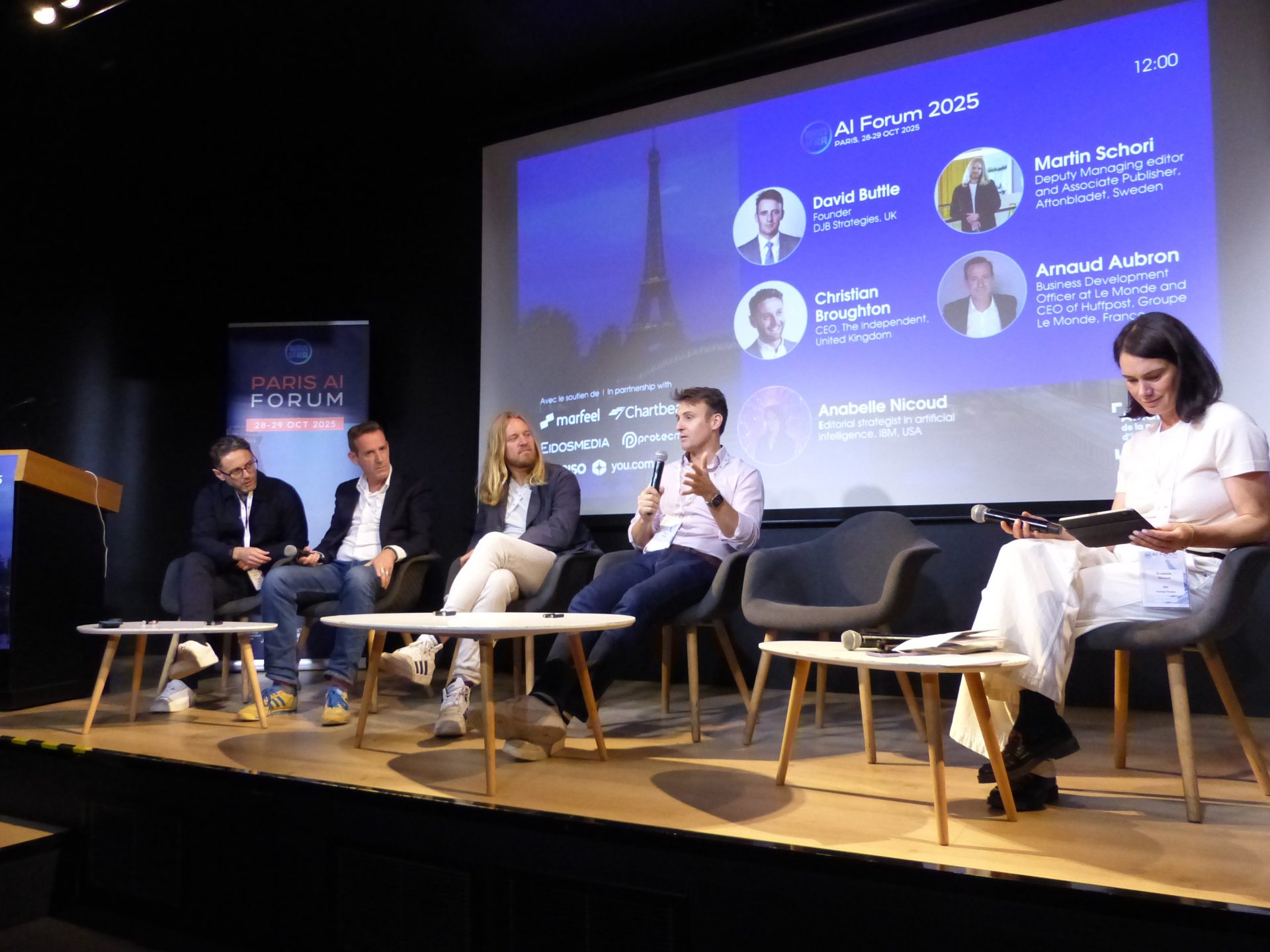
Newsletter
Newsletter
Push notifications are a vital way to build habit and loyalty and increase engagement with content, but it’s essential to avoid overwhelming users.
4th July 2025

Push notifications are an essential component of a publisher’s toolkit to drive deeper direct relationships with their most loyal audiences. In our recent report on push, the Art of the Nudge, we saw that publishers that implemented push notifications had a 60% increase in unique users within just three months. Push has proven to be a powerful tool, not only for strengthening loyalty among highly engaged users but also for reducing app churn.
However, findings from the 14th edition of the Reuters Institute Digital News Report suggest that new challenges have emerged for publishers trying to optimise push notification strategies. In today’s media bulletin, we’ll explore what’s changed, and how publishers can respond to minimise potential downsides while maximising engagement.
The Reuters report found that the use of news alerts has tripled in many countries over the past decade. In 2014, just 6% of people in the U.S. and 3% in the U.K. used news alerts. Today, those figures have grown to 23% and 18%, respectively. However, the data reveals that most of this growth occurred before 2017, with the pace slowing significantly in recent years. Globally, 21% of respondents now report receiving news alerts, compared to 45% who access news via search and 43% through social media.
As the report noted, push notifications aren’t primarily designed to attract new audiences. Instead, they serve as a powerful tool to keep engaged app users coming back. Alongside email newsletters, push notifications are one of the most effective methods for publishers to deepen relationships with their existing audiences. Although unlike newsletters, which tend to resonate more with older demographics, push notifications perform well across all age groups and genders. They remain a vital component in a publisher’s engagement strategy.
In a piece for the Press Gazette, Nic Newman, the lead author of the Reuter’s report poses the question “Do you get too many mobile news alerts? Are they always relevant or well judged? Have you thought about unsubscribing or deleting the app as a result?”.
One of the report’s more concerning findings for publishers is the growing sense of overload among consumers. Many users are feeling overwhelmed by the sheer volume of notifications competing for their attention. And not just from news apps, but also from sports updates, calendar reminders, messaging groups, and social media, as the report highlighted.
This surge in digital noise has led to “news alert fatigue,” further amplified by the broader trend of news avoidance we discussed a couple of weeks ago. According to Reuters, there was “a clear link” between the two: “those who say they ‘often avoid’ the news were less likely to sign up in the first place and more likely to disable them later.”
The data suggests that many are intentionally tuning out, with 43% of those that don’t get push notifications saying that they’ve actively chosen to disable them. Either the alerts aren’t useful, or there are simply too many.
In response to growing user fatigue, both iOS and Android have taken steps to improve the notification experience by reducing the volume and increasing the relevance of alerts. Both platforms now summarise, prioritise and present push notifications in ways that reduce overload and improve relevance. While some initiatives, like Apple’s attempt to de-duplicate notifications, were rolled back after errors, the overall direction is clear and tighter controls are coming. For publishers, this means adapting their push strategies to stay relevant, personalised and engaging on an increasingly selective lock screen.
In his Press Gazette article, Nic Newman observed that “publishers are constantly walking a tightrope as they try to build frequency without unduly irritating or distracting their most loyal customers.” So how can they strike the right balance by delivering notifications that are timely and valuable, without contributing to alert fatigue? And just as importantly, how can they use push strategically to engage not just their core audience, but also reach those who are less engaged?
One effective approach suggested by Nic is to limit the total number of notifications a user can receive. He highlighted The Times, which restricts notifications to a maximum of four per user within a 24-hour period. However, some publishers may find this cap restrictive as it could prevent them from sending a breaking news alert later in the day if the limit has already been reached. A more flexible strategy is an option for some, where routine news notifications are capped, but significant, unexpected breaking news alerts can override this limit to ensure timely delivery. Publishers should carefully consider how breaking news fits alongside general content, as striking the right balance can be challenging.
Another example the report highlighted was BBC News, which typically sends up to ten notifications per day, primarily focused on national and international breaking news. Occasionally, they also use notifications to promote other content such as features, investigations, or analysis. However, feedback from sources Reuters spoke with suggested that while users appreciate breaking news alerts, they may find other types of notifications intrusive or jarring. The risk of this approach is that it can encourage users to opt out from all notifications, including those they find valuable and useful.
When we published our push notification report earlier this year, we identified offering users greater control as a key strategy to mitigate notification fatigue. Implementing push preference centers enables users to select only the types of notifications they find relevant, enhancing their overall experience. Additionally, for users who show low engagement with push notifications, publishers can consider adjusting their approach by experimenting with different content types and optimising delivery timing to boost relevance. For example, in April, we examined how The Hindu leveraged AI technologies to deliver more targeted and effective push notifications, outperforming traditional rules-based systems.
Enhancing the relevance of push notifications can be further strengthened by incorporating visual cues that help them stand out and drive adoption. Reuters highlighted examples like estimated reading time and enriched graphics to add value to push messages. Additionally, features like iOS Live Activities can also enhance user engagement by providing timely, dynamic updates. It’s important to recognise that different strategies will work best for different publishers, making rigorous testing essential.
Also, you need to ensure that the notifications you use match the user’s expected experience. Reuters spoke to a respondent who expressed frustration not only with an overload of irrelevant notifications but also with pushes that appeared interesting but led to paywalled content, an issue particularly noted with Apple News, though it occurs across other apps as well. Push notifications are a powerful tool to re-engage dormant users or promote subscriptions. However, success often depends on ensuring that the notification delivers meaningful content once tapped. For example, subscription offers should link directly to the in-app subscription page via deep links, while re-engagement messages for non-subscribers should lead to accessible, un-gated content to maximise user interest and interaction.
Push notifications remain a vital tool for app engagement, but increasing competition for user attention is making it more challenging for publishers to fully capitalise on this opportunity. The key is to avoid overwhelming users with irrelevant content. Many appreciate receiving breaking news directly on their lock screen, but if they are bombarded with a flood of less relevant messages, they may opt out and miss out on that value altogether.
User control is essential. Publishers should prioritise the user experience by implementing preference centers and limiting notifications once users stop engaging. As AI tools on iOS and Android continue to evolve and become more effective at filtering out unwanted notifications, publishers must stay ahead by proactively refining their strategies to deliver only the most relevant and timely content.
Here are some of the most important headlines about the business of news and publishing as well as strategies and tactics in product management, analytics and audience engagement.

Newsletter

Newsletter

Newsletter

Newsletter

Newsletter